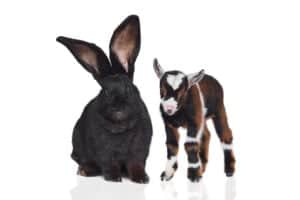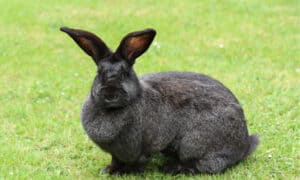Some of them have shifting coat colors depending on the season and others have feet so large they serve as snowshoes! Discover the five largest rabbits hopping around Canada!
The 5 Largest Rabbits Hopping Around Canada
1. Arctic Hare
Scientific name: Lepus articus
This is the largest rabbit in Canada! Its weight is anywhere between six to 12 pounds and its size is 18 to 26 inches long. The Arctic and Subarctic are their home, and they have adapted to harsh weather conditions over millions of years. In the winter, the arctic hare changes to a bright white, which ensures excellent camouflage for the snow. While it allows them to blend in, it also keeps them warm. In the winter, their coats change to a bluish-gray or brownish which also gives them a better chance of camouflage and survival with the dead trees and shrubbery in their surroundings.
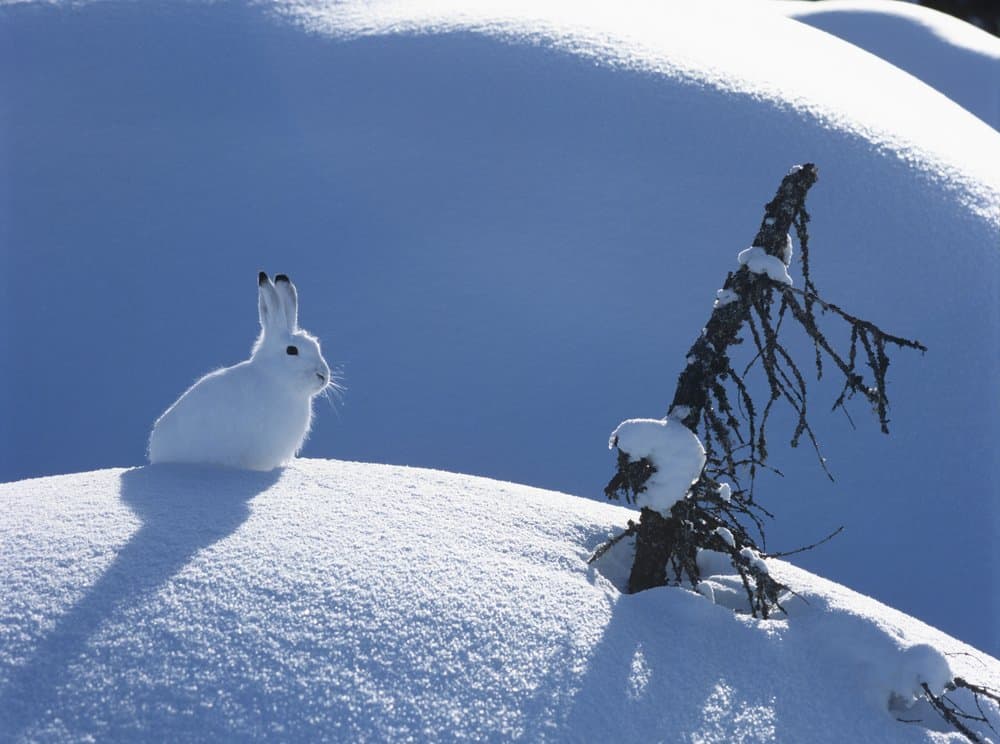
Arctic hares camouflage well, no matter the season.
©sirtravelalot/Shutterstock.com
2. White-tailed Jackrabbit
Scientific name: Lepus townsendii
This white-tailed creature is one of the largest species in North America and it is also native to Western Canada. You can distinguish this rabbit by looking at its long ears and long hind legs. Their legs help them tremendously to outrun predators. Although they do not always succeed, they surely try!
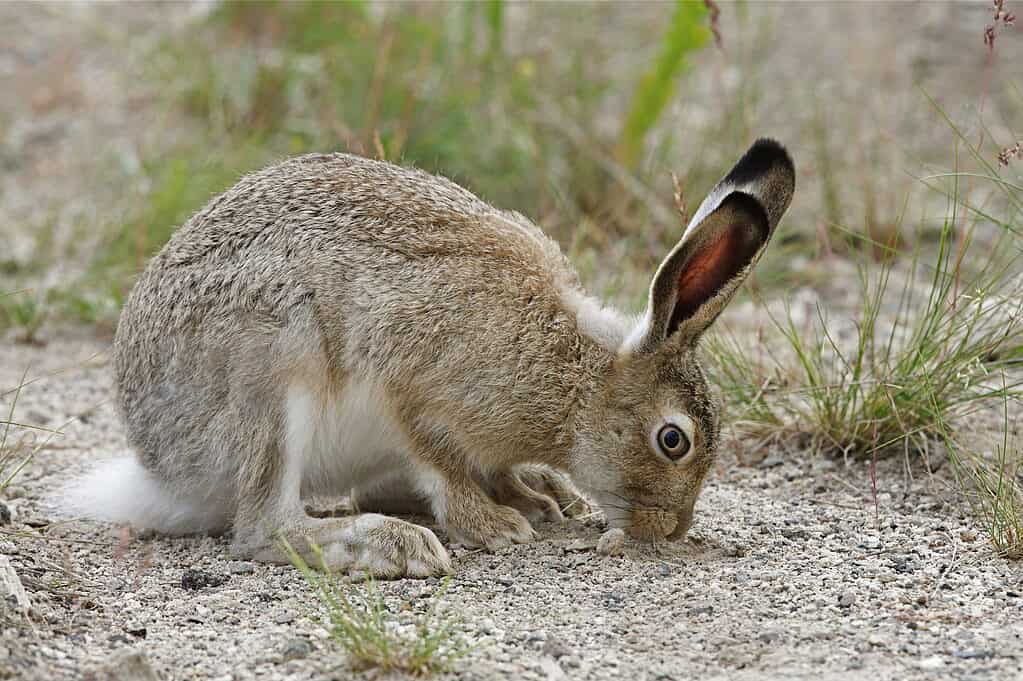
White-tailed rabbits are native to North America.
©Tom Reichner/Shutterstock.com
3. Eastern Cottontail
Scientific name: Sylvilagus floridanus
This species is daring! The eastern cottontail can reside in suburban as well as urban areas. These rabbits live in the eastern and southern parts of Canada. They are adaptable to their environment and well known for their short, cotton-like tail. Their fur is kind of brownish-gray with a white underside. When they’re scared or about to run for cover, the eastern cottontail raises its tail, showing its most distinctive feature.

The eastern cottontail rabbit have a cotton-like tail.
©Rabbitti/Shutterstock.com
4. Mountain Cottontail
Scientific name: Sylvilagus nuttallii
Mountain cottontails prefer mountain slopes. They look for brushy areas and they gravitate to grasses and sagebrush. Their favorite way to shelter is the use of altitude! They usually live up in high places 4,500 to 10,500 feet above sea level. Mountain cottontails normally spend their lives alone. The only times they gather with others is when it is time to eat (or mate!). They eat in open spaces but always near brush, so they can easily run for cover if the need arises.
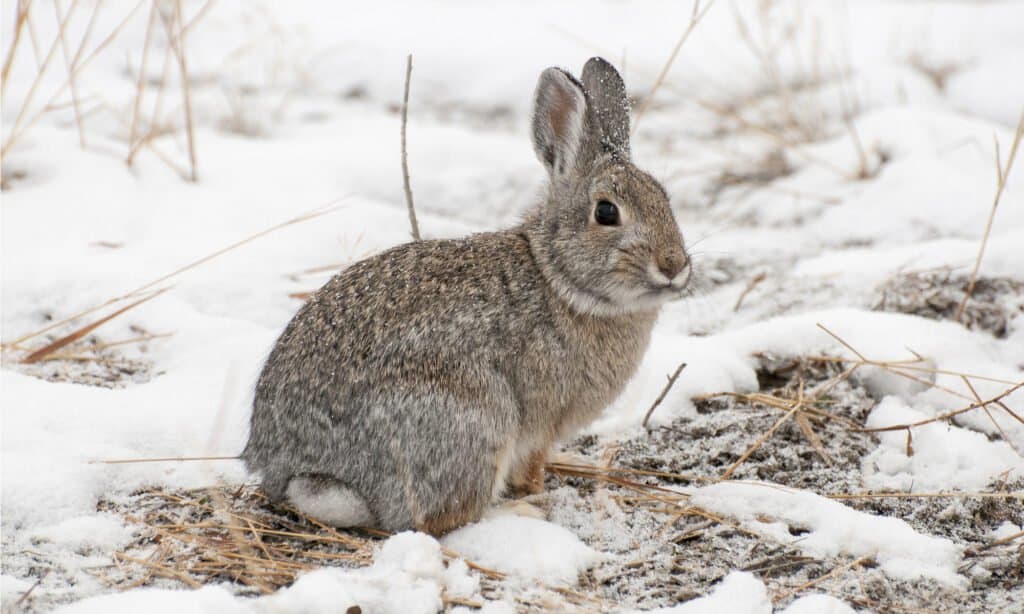
Mountain cottontail rabbits thrive in high elevation.
©moosehenderson/Shutterstock.com
5. Snowshoe Hare
Scientific name: Lepus americanus
These rabbits can easily be found across Canada in most forests. Like Arctic hares, they possess an incredible evolutionary adaptation. Their coats change depending on the season. Much like humans don different colors depending on the season! In the summer months, it is brownish or reddish-brown and when the weather changes and it’s wintertime, it changes to pure white. This allows them to camouflage well with the snow. Plus, during winter, their large feet serve as snowshoes!
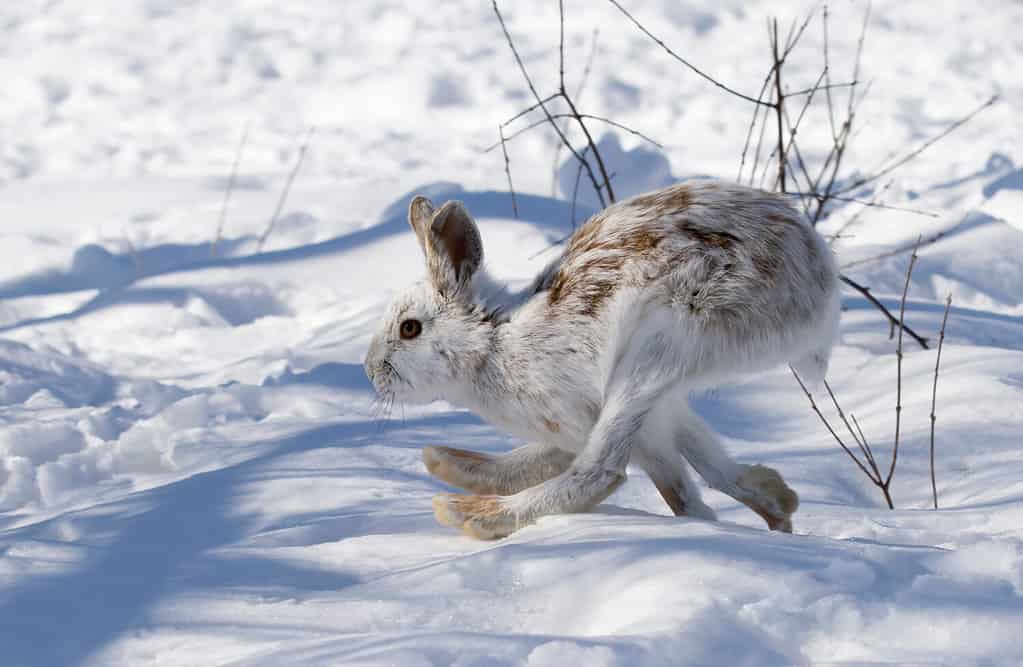
Snowshoe hares have large feet that help them travel in deep snow without sinking.
©Jim Cumming/Shutterstock.com
The photo featured at the top of this post is © Sophia Granchinho/Shutterstock.com
Thank you for reading! Have some feedback for us? Contact the AZ Animals editorial team.





